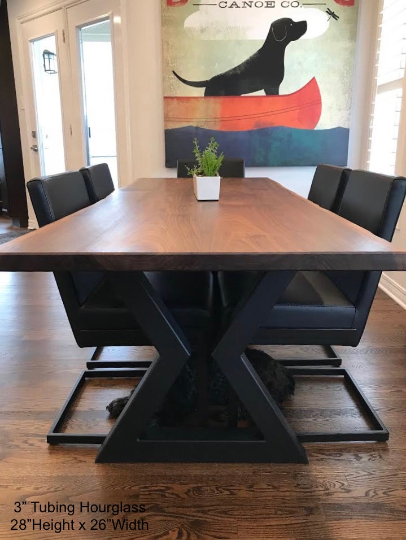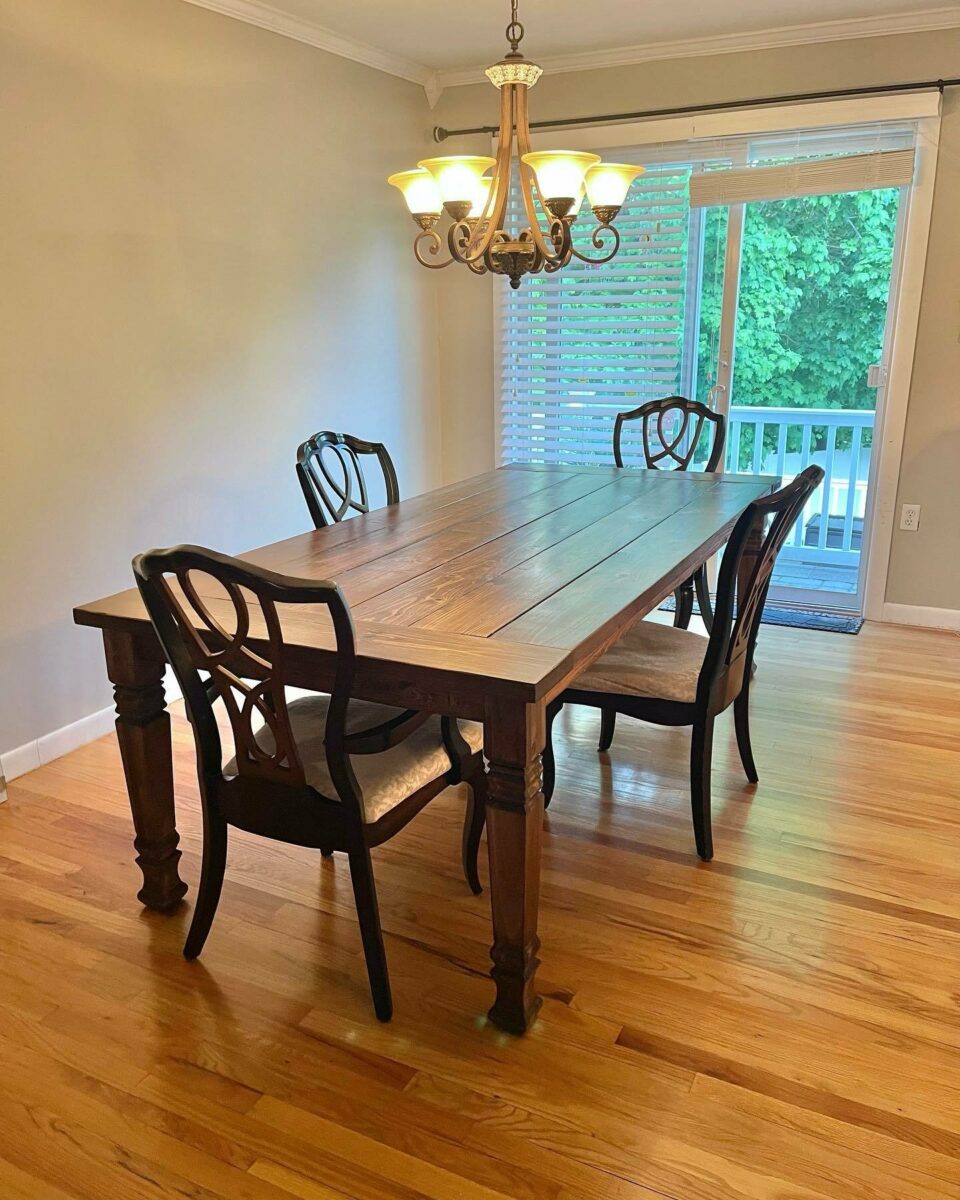Professional Tips for Putting Up Eating Space Table Legs for Maximum Security
When it involves setting up eating area table legs, achieving maximum stability is paramount for both capability and visual appeals. The procedure begins with picking the appropriate products and equipment, adhered to by meticulous positioning and factor to consider of weight distribution. Each step plays a crucial duty in ensuring that the completed product holds up against daily usage without compromising safety or style honesty. Nonetheless, comprehending the nuances of these elements can dramatically affect the general outcome. What certain techniques can improve stability even better?
Choose the Right Legs
When picking the proper legs for your dining-room table, it is vital to consider both functionality and visual appeals. The legs you choose will considerably impact the overall style and stability of the table. Initially, examine the table's intended use; if you expect frequent events, stronger legs, such as those made from strong timber or steel, might be better, as they use raised durability and support.
Common eating tables usually vary from 28 to 30 inches in elevation, so make sure the legs straighten with this requirement for convenience. Conical legs can include a contemporary touch, while turned legs might communicate a more timeless visual.

Select Appropriate Hardware
Exactly how can the right hardware improve the stability and longevity of your eating space table? The option of ideal hardware is critical to making sure that the legs of your table are firmly connected and able to stand up to regular usage. High-grade screws, bolts, and braces offer the necessary stamina to sustain the weight of the table, along with any kind of additional tons put upon it throughout celebrations or meals.
When picking screws, go with those made from durable products such as stainless-steel or brass, which resist corrosion and keep stability gradually. The length of the screws is similarly important; they ought to permeate deeply into the table's framework without compromising stability. For bolted links, take into consideration utilizing lock washing machines to avoid loosening due to resonance or motion.
Additionally, using edge brackets can add added assistance, particularly for larger tables or those with heavier tops. These braces disperse weight uniformly and assist maintain the table's form. Making sure that the equipment you select is appropriate for the specific products of your table will further enhance its general security and longevity, enabling you to appreciate your dining experience for years to come.
Ensure Appropriate Alignment
Appropriate positioning of dining space table legs is vital for both visual allure and functional stability. Misaligned legs can cause an irregular tabletop, which might not only be visually unattractive however likewise compromise the table's functionality. To achieve optimum placement, begin by determining the distance from the table's corners to the leg accessory points. This makes sure that each leg is positioned equidistant from the edges, developing a balanced look.
Utilize a level throughout installation to validate that each leg is vertical to the tabletop. This step is important, as even minor discrepancies can escalate into significant security concerns with time. It is suggested to mark the wanted leg positions on the bottom of the find more information table with a pencil or concealing tape before protecting them. This method works as an aesthetic guide, enabling for modifications as needed.
In addition, confirm the positioning after the initial screws are tightened, as changes might be necessary prior to totally securing the equipment. By prioritizing appropriate placement, you not only improve the table's overall style but additionally make sure that it remains functional and steady for years to come.

Think About Weight Circulation
After guaranteeing proper alignment of the dining-room table legs, it is essential to consider weight circulation to enhance stability and capability. dining room table legs. Appropriate weight circulation is vital in preventing wobbling and making certain that the table can sustain its designated load without danger of tipping or collapsing
When positioning the legs, ensure they are placed at equal ranges from the center of the table to evenly disperse the weight throughout the structure. Take into consideration the weight of the table top and any kind of items that will regularly hinge on it, such as tabletop appliances or decorative pieces. Tables with larger surfaces need to ideally have legs positioned closer to the edges, as this optimizes the base of support and reduces try here the risk of instability.
In addition, if the table is planned for use in a high-traffic area, consider using much heavier materials for the legs or including maintaining elements, such as cross-bracing or a lower rack - dining room table legs. These changes can help maintain equilibrium and prevent moving during usage. Ultimately, a well-considered weight distribution approach will considerably boost the table's total efficiency, ensuring it stays a eye-catching and practical focal point for your eating space
Examination Security Prior To Use
Evaluating the security of the dining-room table prior to usage is a crucial action that needs to not be overlooked. Making certain that the table is secure and protected can stop crashes and extend the life expectancy of the furniture. Begin by using mild pressure to numerous points on the table surface area. Press down on the facility and then along the sides, moving or observing any kind of wobbling. If the table shows instability, determine the legs or joints that might call for modification.
Following, inspect that all screws and bolts are tightened up appropriately. Loosened connections can bring about instability and potential damages with time. If necessary, make use of wood glue on joints to enhance security, ensuring to enable adequate drying out time.

Verdict
In final thought, the setup of eating area table legs calls for careful consideration of materials, hardware, placement, and weight circulation to achieve optimum stability. By choosing tough legs and high-grade fasteners, making sure precise positioning, and dispersing weight equally, the structural integrity of the table can be dramatically enhanced. Conducting a stability examination prior to routine usage even more makes sure that the table will withstand everyday stress, thus providing a trusted and risk-free eating experience.
When it comes to installing dining room table legs, attaining maximum security is extremely important for both performance and aesthetics. The legs you pick will considerably impact the general design and stability of the table (dining room table legs). Basic dining tables usually vary from 28 to 30 inches in elevation, so make certain the legs straighten with this criterion for convenience.Appropriate placement of eating space table legs is necessary for both aesthetic charm and practical stability.In conclusion, the installment of eating room table legs requires mindful factor to consider of materials, weight, positioning, and look at more info hardware circulation to accomplish maximum security